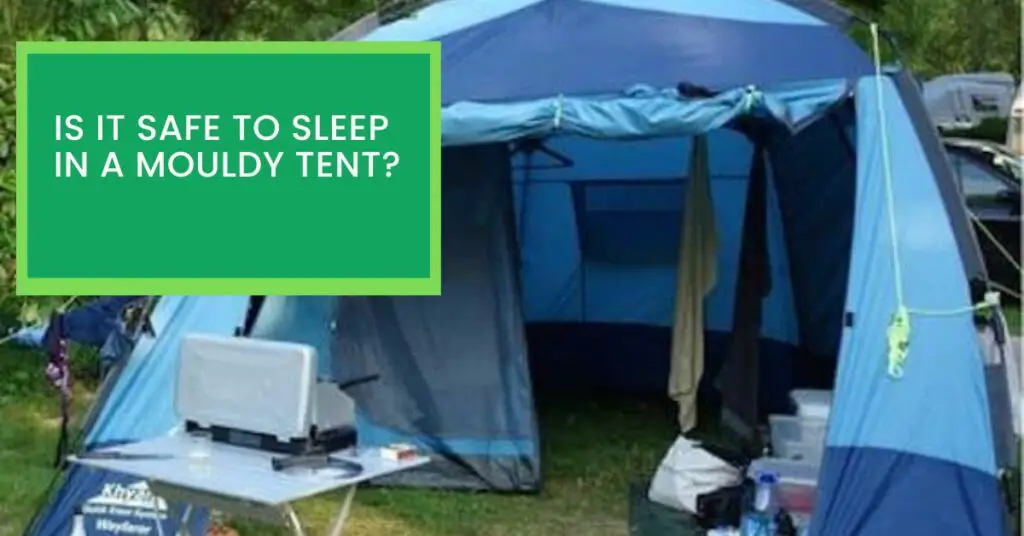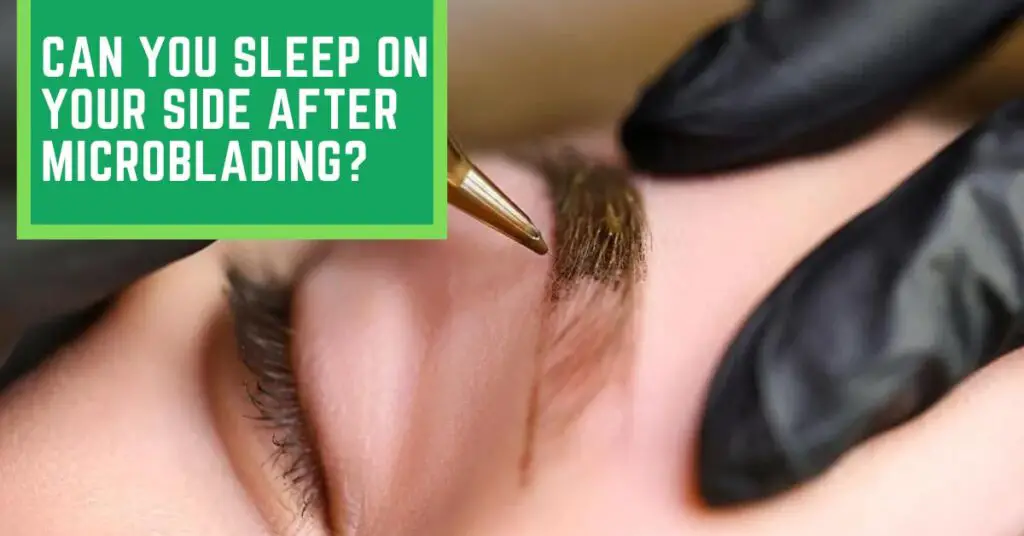Camping is a great way to spend time outdoors and get away from the hustle and bustle of everyday life.
One of the best parts about camping is sleeping under the stars in a tent. However, most campers do not have an idea of how safe it is to sleep in a mouldy tent.
Mould can definitely be harmful to your immune system, your vision and your lungs, so it’s generally not a good idea to sleep in a tent that has been exposed to mould.
In this article, we will discuss the risks of sleeping in a mouldy tent and how to prevent mould from growing in your tent.
What is Exactly a Mouldy Tent?
Mouldy tents are a big pain, and they’re also a health hazard. But what exactly is a mouldy tent? And how can you avoid getting one in the first place?
A mouldy tent is simply a tent that has been contaminated with mould. Mould is a type of fungi that thrives in warm, moist environments. When mould spores land on a damp surface, they can quickly start to grow and spread.
Tents are particularly susceptible to mould growth because they’re often stored in humid environments (like garages or storage sheds), and they’re made of porous materials (like canvas or nylon) that can easily absorb moisture.
If you suspect that your tent is starting to grow mould, it’s important to take action immediately. Mould can cause serious respiratory problems, so it’s not something you want to mess around with.
Why is a Mouldy Tent Dangerous?
Mouldy tents are dangerous because they can cause serious health problems. Mould can cause respiratory problems, skin irritation, and allergies. In some cases, it can even cause death.
When you’re camping, you’re exposed to the elements, and this makes you more susceptible to mould spores. If you have a mouldy tent, you’re at risk of inhaling these spores and becoming ill.
If you’re allergic to mould, you could have a serious reaction if you sleep in a mouldy tent. Even if you’re not allergic, exposure to mould can still make you sick. Inhaling mould spores can cause respiratory problems like asthma, bronchitis, and pneumonia.
Skin contact with mould can also cause irritation, rashes, and infections. If the mould gets into your eyes, it can cause conjunctivitis or other serious eye problems.
Mouldy tents can be a serious health hazard, so it’s important to make sure your tent is clean and dry before you use it.
If you find mould on your tent, you should clean it immediately. Use a mild detergent and a brush to scrub the mould away. Then, make sure the tent is completely dry before you pack it away.
If you have a mouldy tent, don’t use it. It’s not worth risking your health just to save a few dollars.
Prevention Tips to Keep Your Tent Safe From Mould
Mould can be a serious problem for tents, causing musty odours, staining, and deterioration of the fabric. Fortunately, there are several things you can do to prevent mould growth in your tent.
1. Make sure the tent is clean before storing it. Thoroughly clean the inside and outside of the tent, including the rainfly, with a mild soap and water solution. Be sure to rinse the soap completely off the fabric.
2. Store the tent in a dry place. After cleaning, make sure the tent is completely dry before storing it away. If possible, store the tent in a cool, dry place out of direct sunlight.
3. Inspect the tent regularly. At least once a month, take the time to inspect your tent for mould or mildew growth. If you see any mould or mildew, clean it immediately with a mild soap and water solution.
By following these simple tips, you can help prevent mould and mildew growth in your tent. Regular cleaning and inspection are key to keeping your tent in good condition.
Tips For Cleaning a Mouldy Tent
If you’ve ever had the unfortunate experience of coming home to find your tent covered in mould, you know how frustrating it can be. Not only is it unsightly, but mould can also cause serious health problems if not removed quickly and properly.
Fortunately, there are a few simple steps you can take to get rid of mould for good. Here are some tips for cleaning a mouldy tent:
1. Start by setting up your tent in a sunny spot. The sun’s ultraviolet rays will help to kill mould spores.
2. Next, mix up a solution of one part bleach to ten parts water. Use this solution to scrub down the entire inside and outside of your tent.
3. Once you’ve scrubbed the mould away, rinse your tent off with clean water.
4. Finally, set up your tent in a well-ventilated area to help it dry completely.
By following these steps, you can get rid of mould and keep your tent looking and smelling fresh all season long.
How Can Moulds Damage Your Tent?
While moulds are essential for breaking down dead organic matter, some types of mould can cause health problems in people.
Moulds can damage your tent in several ways. They can cause the fabric to rot, and they can also cause staining.
If you think that there is mould growing on your tent, it is important to remove it as soon as possible. You can do this by cleaning the affected area with a mixture of water and bleach.
Frequently Asked Questions Related to Safety in a Moldy Tent
1. Can mould in a tent make you sick?
Yes, it’s possible to get sick from mould in a tent. Mould reproduces by releasing spores into the air, and when these spores are breathed in, they can cause respiratory problems and other health issues.
To avoid getting sick from mould in a tent, make sure to keep the tent clean and dry and ventilate it well when you’re inside. If you start to feel sick after spending time in a mouldy environment, see a doctor right away.
2. Can you wash mould out of a tent?
It’s possible to wash mould out of a tent, but it’s not always easy. Mould can be stubborn and difficult to remove, especially if it’s been growing for a while.
If the mould has just begun to grow, you may be able to wash it away with soapy water simply. But if the mould has been growing for a while, it may be necessary to use a stronger cleaning solution.
There are a variety of commercial cleaners available that can be effective at removing mould from tents.
You can also try making your own cleaning solution by mixing one part bleach with three parts water. Be sure to test any cleaner or solution on a small area of the tent first to make sure it doesn’t damage the fabric.
3. What happens if you sleep in a mould?
Allergies, respiratory problems, and other health conditions can develop from prolonged exposure to mould.
Mould is a type of fungus that can grow indoors or outdoors. It releases tiny spores into the air that can cause allergic reactions in some people, as well as respiratory problems and other health conditions.
Prolonged exposure to mould can be very dangerous for your health, so it’s always best to remove any sources of mould in your place as soon as possible.





